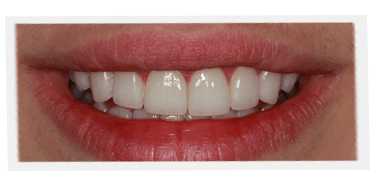
Below is a continuation on our journey into Smile Design. So far, we’ve covered various principles in Part 1, Part 2, and Part 3. Next, we cover two more important principles when determining the right smile for your porcelain veneers, crowns, or dental implants. (Taken below from my book, A Guide to the Perfect Smile.)
#7 Axial Alignment
The axial alignment of the teeth is the pattern by which the teeth line up with each other. The teeth may sit inside the jaw in relatively different positions. They may all line up and appear to be quite vertical. They may line up and be vertical at the front, with the remaining teeth all at an angle of 5 degrees. Or they could even be like a fan where they start straight and each tooth subsequently “folds” out.
The key for the dentist is to find the pattern unique to each person. If it is determined to be a good pattern, then the dentist must make sure not to change it when they put veneers or crowns on the teeth. If it is determined to be a defective pattern, then the right one has to be determined and implemented. For example, if someone has a very angular face, you will want those teeth to have some sort of angle as the teeth cascade down.
#8 Gingival Zenith
When dentists put veneers or crowns on teeth, they of course have to follow the shape of the teeth they are treating. But they also have to adjust the gum line to fit the teeth properly. When that isn’t done, people perceive something to be wrong with the teeth, when it’s the gum line, not the teeth, that’s the problem.
The gum line around the two front teeth should have beautifully shaped curves or arches (think of the golden arches of McDonald’s). After all, if the gun line was pointy or oblong, it wouldn’t fit properly over those teeth. Gum lines have a unique shape for each tooth. The maxillary central incisor has a different shape from that of the lateral incisor and from that of the cuspid. The shape of the curve above the teeth has certain high points. Each particular point is called a gingival zenith.
The placement of the zenith can be highly critical to making the overall portion of the tooth look natural to the gum. Today, changes to the gum line are easily adjusted with dental lasers.



